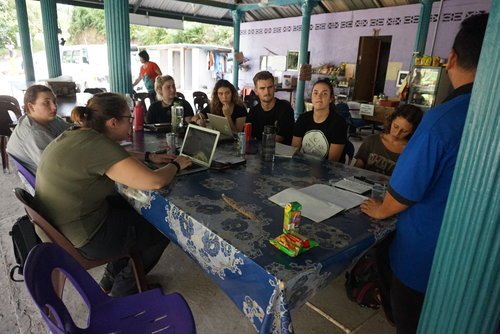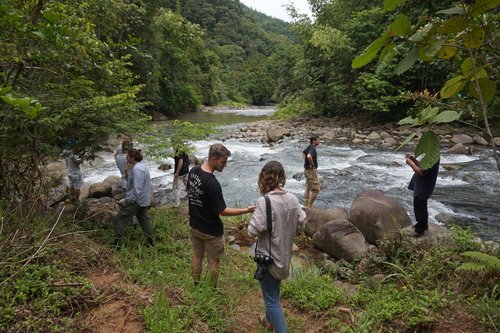
Working with Indigenous Communities
The Global Student has working relationships with several indigenous communities in Sarawak and Sabah, Malaysian Borneo, who value the opportunity to welcome international students into their communities. Not only does the organisation or community benefit from the projects that students work on, but the opportunity to showcase their culture to outsiders instills a sense of pride in the youth of the communities. Community members also recognise that engagement with foreigners builds an awareness of the wider world and provides aspirational motivation in school aged children.
In Sabah, the land of the long white cloud, we work regularly with PACOS, a Kadazan community-based organization dedicated towards supporting indigenous communities in regional and remote Sabah. Students have worked on community projects in indigenous land rights, rural health, and community development, in addition to volunteer projects that improve the facilities at Community Learning Centres in remote villages.
Our very first program was with the Lotud community outside of Kota Kinabalu where the Deakin Global Citizens helped build the Kangaroo Learning Centre to assist the community children to improve use of both the local indigenous dialect and English. Photos attached
In Sarawak, the land of the hornbill, we are fortunate to work with the Kelabit, Bidayuh, Kenyah and Kayan communities that range from geographically remote to more urbanized. We also partner with other organisations who engage with local communities such as Penan for social enterprises projects.
Projects in Sarawak have included IT for social impact, where students created websites for village homestay programs, and an audit of village eco-tourism programs to improve service delivery and promote awareness.
Cultural immersion
Students immerse themselves in some parts of a program in rural village life through engaging with the local community. Accommodation varies from Longhouses, community halls, village homestays, and more regular housing. Sometimes this is very basic and at others has more modern amenities. Meals are usually provided, and while very basic, hosts go out of their way to introduce local delicacies. Communities have varying levels of English proficiency and while the adults might be shy to practice, the children have no trouble showing off what they know! Program participants are always accompanied by a program leader with good English.
In an early program with the Kelabit community of Bario, a group of Cultural Heritage and Museum Studies postgraduate students worked with the community to scope a project that would assist them with building a community museum. The group was accompanied by film-making undergrads who documented the entire program. This program spawned subsequent projects in architecture, visual arts and eventually conservation and environmental sustainability.
Potential Programs
-

Rural Health
Targeted at any student specializing in the health sciences field, including nursing, physio, dental hygiene, nutrition, OT, Paramedicine and especially those students who wish to work in the rural or indigenous health sectors. Students might engage in ongoing research or to help develop or deliver public health or promotion programs, including educating remote communities on health and sanitation standards, and providing basic health provisions. Previous group projects have included school programs to promote the importance of oral health, research into the poor growth rates of young children and considering nutritional causes, and the impact of contaminated water on remote communities.
-

Community Development
Outreach into indigenous communities often involves empowering women and creating livelihoods, addressing community health and hygiene issues, confronting issues such as family violence and drug and alcohol abuse, or working with communities in developing community cultural projects such as medicinal “herb” or edible gardens or other “green’ initiatives. Volunteer and discipline specific programs have worked on upgrading community facilities including schools or early education centers, clearing tourist trails and improving signage, and even assisting in the documentation of the community heritage to determine land rights.
-

Education and Training
Opportunities abound with education being a major focus in many indigenous communities, in early childhood programs, indigenous and English language programs, skills-based opportunities for youth, or adult education that provides women with livelihood skills in teaching, basic healthcare, or small business skills. Early childhood centres welcome students that can share ideas and even curriculum development for play-based learning.
-

Social Impact
Many indigenous communities are reliant upon social enterprises where artisans create beautiful goods and artefacts, heritage or local ethnic foodstuffs, or tourism initiatives. These not only are a from of survival for many, but a chance to showcase the cultural skills and lifestyle practices that are slowly dying out. Students can assist in numerous ways through marketing and social media initiatives, business analysis and development, or providing contemporary design ideas.











